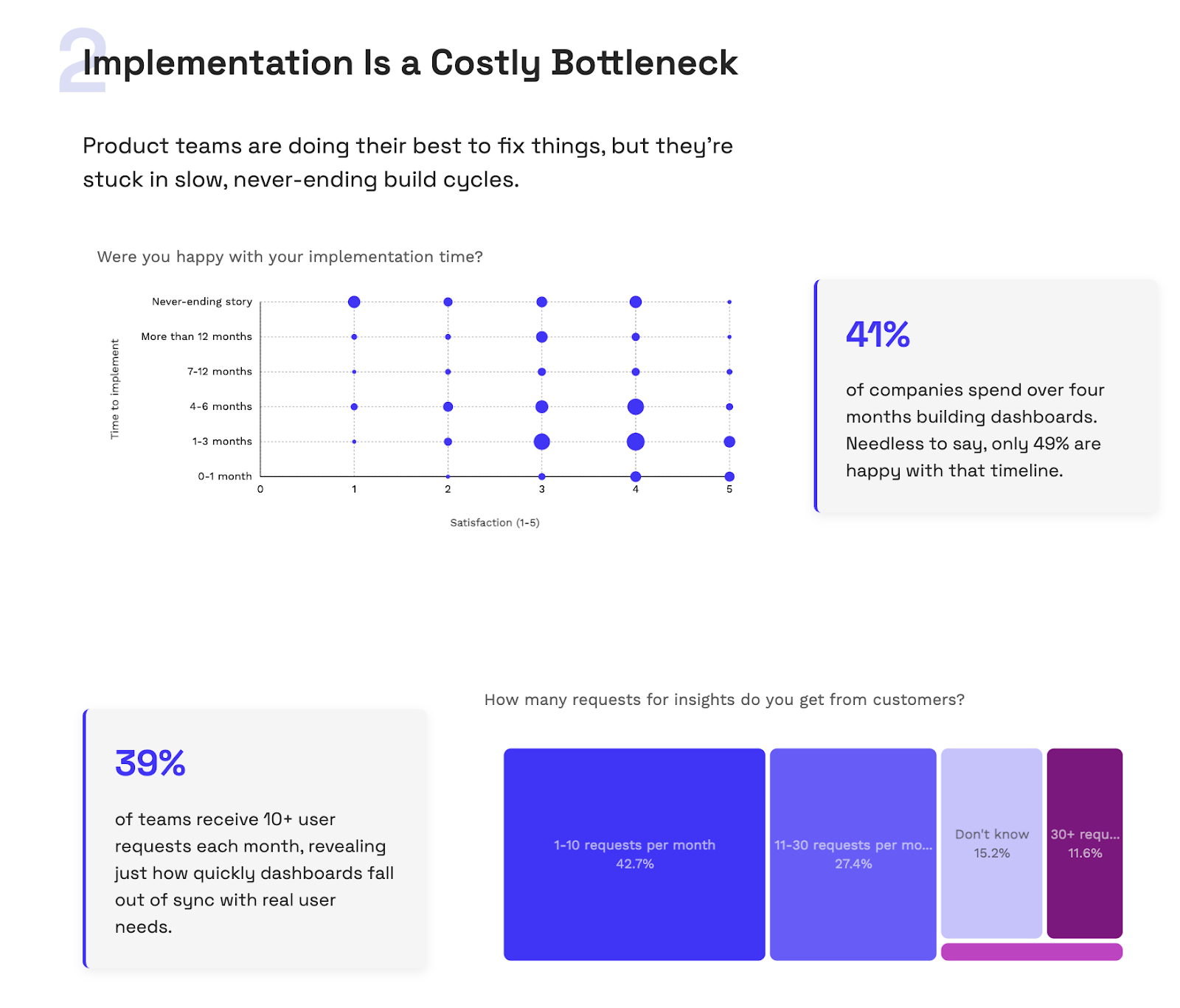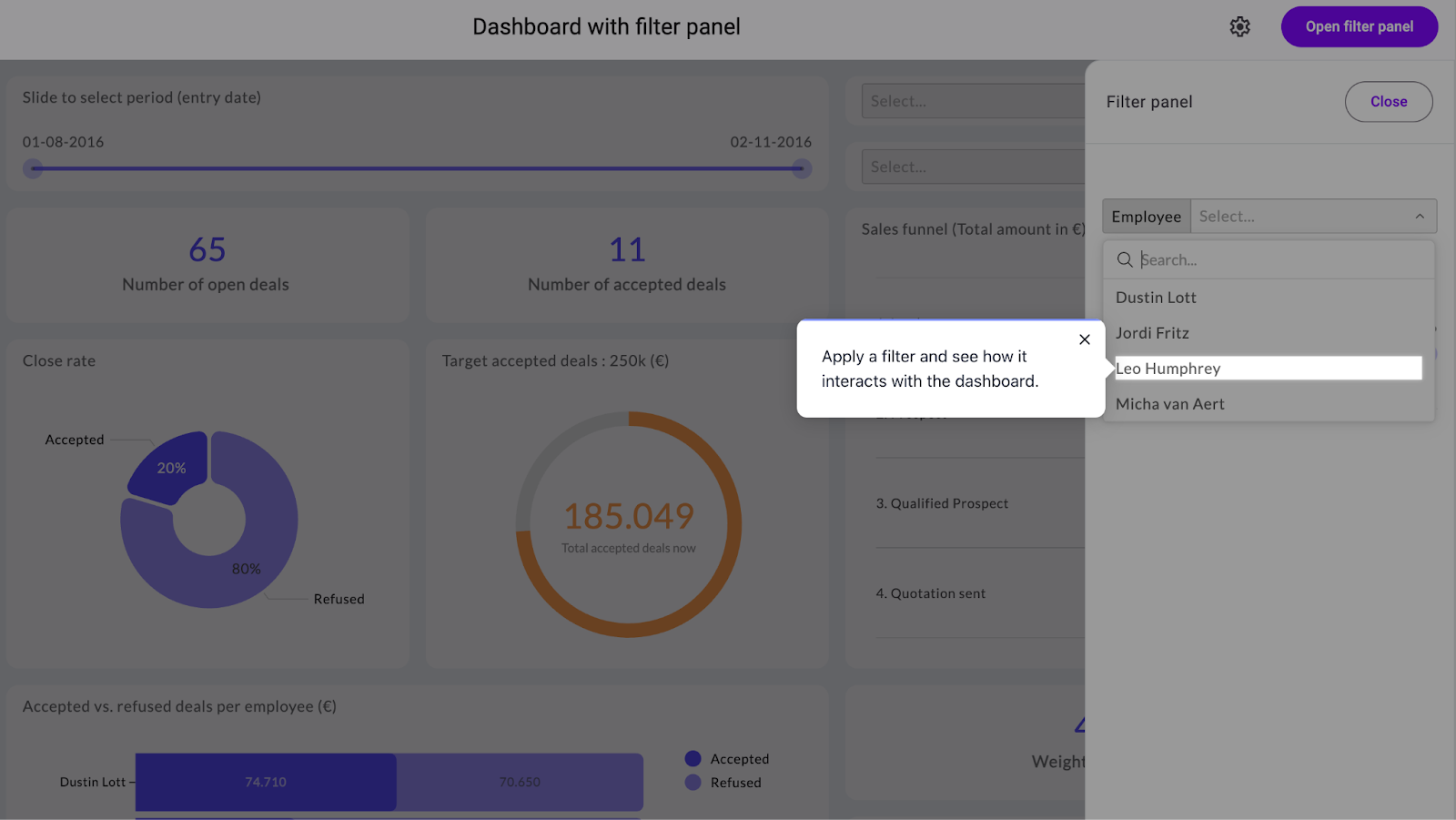Build your first embedded data product now. Talk to our product experts for a guided demo or get your hands dirty with a free 10-day trial.
Iframes have been around since the early days of the internet. For years, web developers relied on these simple HTML elements to embed all types of content in their web pages. But technology evolves rapidly, and today, the iframe is going out of fashion.
In this article, you’ll learn why it’s time to say goodbye to iframes and embrace new web technologies like web components. Learn how web components will blow new life into your embedded content, especially when embedding charts or analytical functionalities.
In modern software development, using iframes is like using a flip phone instead of a smartphone. If you want to embed external content on a webpage, iframes do the job just fine, but they lack the speed, sleekness and user experience that more modern components offer:
In 2025, there are way better alternatives than using an iframe to embed dashboards, charts or other web content. New technologies like AJAX or web components offer a more seamless and secure integration of embedded content.
Web components are a set of JavaScript APIs for developers to create reusable, custom elements that can be embedded in web pages and platforms. These widgets operate independently, so they don’t interfere with other parts of your code.
Web components are based on 4 main specifications:
Web components are essential building blocks in a composable architecture. They help you break up a complex SaaS product or web app into smaller, manageable pieces of code that you can develop and maintain independently.
Although these components can exist independently, they can still interact with each other. Embedding dashboards or charts as web components makes them truly feel part of your app. Unlike iframes, web components can easily communicate with other parts of your application, like filter elements, dropdowns and other components.
Is the iframe dead? Or are they still worth using in some use cases? Let’s look at a quick comparison of using a web component vs an iframe, uncovering the benefits and disadvantages.
Although iframes are considered outdated, they are still a good solution if you want:
On the flip side, forget about iframes if you want to avoid the following limitations:
While iframes are rigid, web components are designed for flexibility:
On the downside, there will be a learning curve to start using web components:
The table below summarizes the pros and cons to help you figure out what’s best for your use case.
Web components offer a faster, smarter, and more interactive way to embed analytics into any software product. They’re built for flexibility, making charts, dashboards, and other data experiences feel like a native part of your app, instead of being bolted on.
Luzmo offers embedding through web components, because they deliver where iframes fall short: seamless integration, real-time interactivity, and complete control over design and behavior.
Here are three powerful ways to start using web components right now to level up your embedded analytics.
Sometimes, you don’t want to embed an entire dashboard on a web page. You just want to blend charts with other content. For example, imagine you’re launching your company’s annual report. To support claims in the report, you want to add interactive charts and graphs alongside the text.
With iframes, adding multiple charts will drag down load times and limit your display options.
Web components keep things fast and flexible, letting you place each chart exactly where and how you want it.

The biggest advantage of web components is their interactivity. Take the annual report example: two charts embedded as separate web components can easily interact.
For instance, one chart can dynamically filter the other. They can also connect to external filters in your app. So, if your annual report page has a dropdown to switch years, selecting 2022 will instantly update all embedded charts to show 2022 data.
Another cool example is this collapsible filter panel. Users can apply filters that instantly update every embedded chart on the page. When it’s collapsed, the filters stay applied in the background, keeping the page clean while still showing personalized data.

Iframes are great for embedding whole dashboards with minimal developer effort. But let’s face it: who wants to sit and stare at an overwhelming dashboard full of charts that communicate… nothing? Users expect smart insights everywhere; consuming data without even thinking about it.
Embedding with web components is the first step towards a truly composable analytics experience. You can drop individual charts, tables, or filters straight into your app — mixing and matching different chart components in your own app.
And everything that comes next? Luzmo Flex will take it from there. This developer-friendly SDK is a complete toolkit for embedding analytics as flexible building blocks. Pick the components you want, place them anywhere in your app, and make them work together seamlessly. Replace bulky dashboards with analytics that feel native from the start.
Let these 9 examples inspire you what you can build with the power of Luzmo Flex and web components.
At Luzmo, we set the standard for modern embedding. Our web components work seamlessly in any major frontend framework, giving you all the flexibility and interactivity you need.
With Luzmo’s embedded analytics platform, product managers go from idea to fully integrated analytics in days, not months. See it in action with a free 10-day trial or book a demo with our experts.
Build your first embedded data product now. Talk to our product experts for a guided demo or get your hands dirty with a free 10-day trial.
